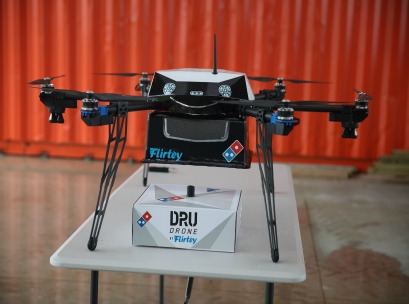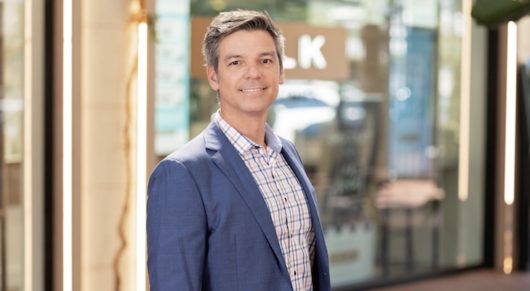 The Australian government is imagining what Australia’s future might look like in 20 years, part of efforts to rethink the infrastructure of the national supply chain.
The Australian government is imagining what Australia’s future might look like in 20 years, part of efforts to rethink the infrastructure of the national supply chain.
Deakin University, commissioned as a result of this effort, released a scenario planning report to “inform Australia’s national inquiry into freight and supply chain priorities,” which lays out the potential future of this industry.
“We interviewed more than 50 people from different industries… [and] asked them what do you see changing over the next 20 years?” explains Roberto Perez-Franco, senior research fellow at Deakin University and lead author of the report.
“Based on these [answers]…we identify more than 200 future drivers of change something that a person anticipates can change the way things are done.”
These drivers of change can range from robotics, to nanotechnology, artificial intelligence to improvements in shipping, among others.
Such ideas postulated by the report include freight-only flights and airports, decentralising farming and manufacturing so goods are closer to consumers, mobile grocery stores resembling trams that roam a locale to serve its inhabitants, and a fast, reliable way of sharing data between customers and manufacturers.
This information was passed through several more groups of experts to validate the impact and certainty of these drivers, until the research team ended up with two primary ‘families’ of drivers: autonomous technologies and environmental pressures.
Autonomous Technology
Perez-Franco believes there are “many elements [of the report] that are almost certain to come true,” and is fairly certain “that a fraction of the workforce is going to be displaced by new technology.”
“I think there is very little doubt in people’s minds that this is going to end up happening,” he says.
“The question is more of whether the government and industry will do a good job and the responsible thing, which is to retain these people so they can have better jobs.”
The threat of automated technology taking the place of low-skill jobs is real, and in many cases, is already here.
Domino’s Pizza, for example, is already experimenting with using larger drones, capable of carrying a larger payload, to deliver food to customers, representing a threat to the businesses delivery drivers.
“We are looking forward to the next phase of trials of DRU Drone by Flirtey in New Zealand this year,” Scott Bush, general manager of Domino’s New Zealand tells IRW.
“We believe the speed and safety benefits of using drone deliveries is clear, and we look forward to working with regulators, including in Australia, to progress this technology.”
Bush confirmed Domino’s were also spreading their automated delivery service to the Netherlands, while daily deliveries using ground-based robots in Hamburg, Germany were started in 2017.
While automation has clear implications for low-skill positions in many industries, it is also largely to the benefit of the consumer.
“It’s no secret that online shopping in Australia is growing,” says Bob Black, group chief operating officer of Australia Post, as “consumers are buying more and more online internationally and domestically, and as a result we’re processing and delivering more parcels than ever before.”
Black notes that Australians spent $21.3 billion on goods online last year and show no sign of slowing down.
“We’re investing over $300 million in our automation and infrastructure over the next 18 months to ensure we are responding to this growth and delivering an efficient service for our merchants and customers,” he says.
“At our Melbourne Parcel Centre we’ve installed a new wine and fragile goods system, and are extending our Melbourne Gateway infrastructure to make way for a new automated small parcel sorter capable of processing up to 12000 satchels and small parcels per hour.”
At the same time as installing a new parcel sorting system in Brisbane and Sydney, Australia Post will also invest into scanning and mobile technology across the business to facilitate “better visibility and flexible delivery choice for our customers.”
Environmental Pressures
The scenario planning report posits that “in 2037, climate change dominates global discourse: its effects are being felt vividly and globally.”
Having lead a similar report for the US government before moving to Australia, Perez-Franco notes a few similarities between the two countries.
“I think the government of the US and Australia, although not to the same extent, have gotten away with denying certain key elements of climate science,” said Perez-Franco.
“It is the case there is clear science of climate change that is manmade, [and] I am pretty confident within 10 or 20 years such discussion will be as ridiculous as for us today challenging the relationship between tobacco and lung cancer.
“It’s going to be in bad taste to even challenge the idea, because [it will be] so well established.”
Additionally, Perez-Franco sees those companies that get ahead of the curve, become socially responsible and environmentally sustainable will be at an advantage in this future, as “the future is green.”
We see this trend already beginning in Australia, with companies such as Woolworths and Coles doing away with single-use plastic bags in an effort to be more environmentally responsible, and companies such as Tesla championing a more environmentally sustainable method of transportation.
Where does retail fit in to the future?
In terms of retail channels, the report anticipates a further move to customers purchasing online.
“People are nervous about what this would mean for the Australian retailing landscape,” says Perez-Franco.
“Bricks-and-mortar people are going to start feeling the pinch from the online retailers, and we see the race of ‘click-and-mortar’, which is a store that has an online component. Traditional retailers have started doing this.
“The entry fee of free delivery services like Amazon Prime is just going to further incentivise new behaviour from customers.
“So [we must] prepare for large sections of the population to do most of the purchasing of goods online and expecting fast and direct deliveries to their door.”
The obvious way to do this is to, as noted in the report, is increase automation and decentralise manufacturing to ensure goods are reaching their end-point as soon as possible, but Perez-Franco notes a further potential of this streamlined supply chain: in-transit sales.
“If you see a person browsing a certain good, and you can assume a certain likelihood that [it] will be purchased you can start advancing the inventory of those goods…so that when the order is placed, which is the most likely event, the package is already halfway there.”
In some instances, notes Perez-Franco, that’s actually a current tactic.
“Amazon, for example, have developed very sophisticated algorithms that anticipate demand based on the browsing behaviours of the customer, and can start preparing certain orders in anticipation.”
Such a concept will likely only flourish under the circumstances outlined in the report: automated technologies, with free exchanges of fast, reliable data and decentralised manufacturing, but the fact that it, in some way, already exists is promising.
Perhaps, the future is not so far off after all.





